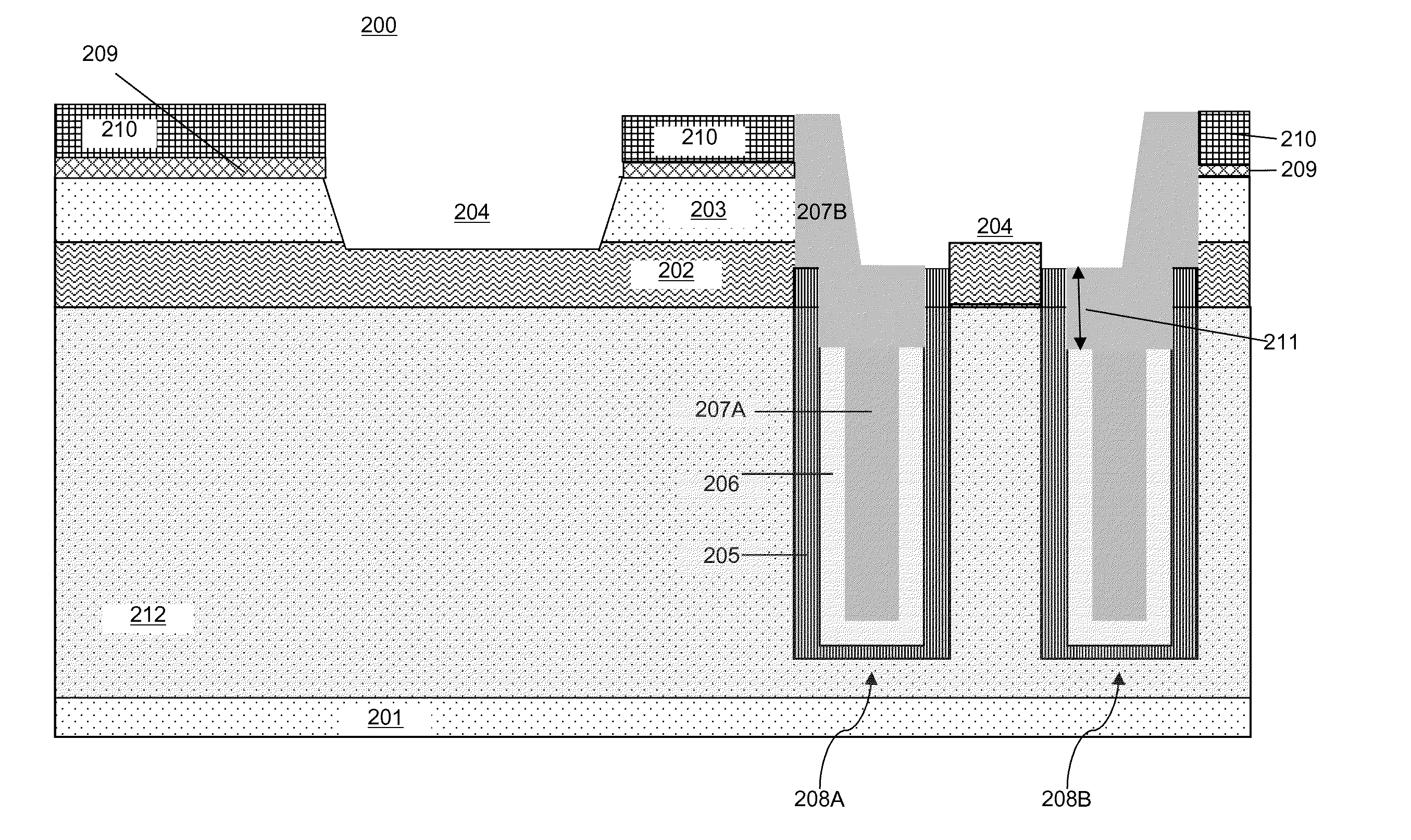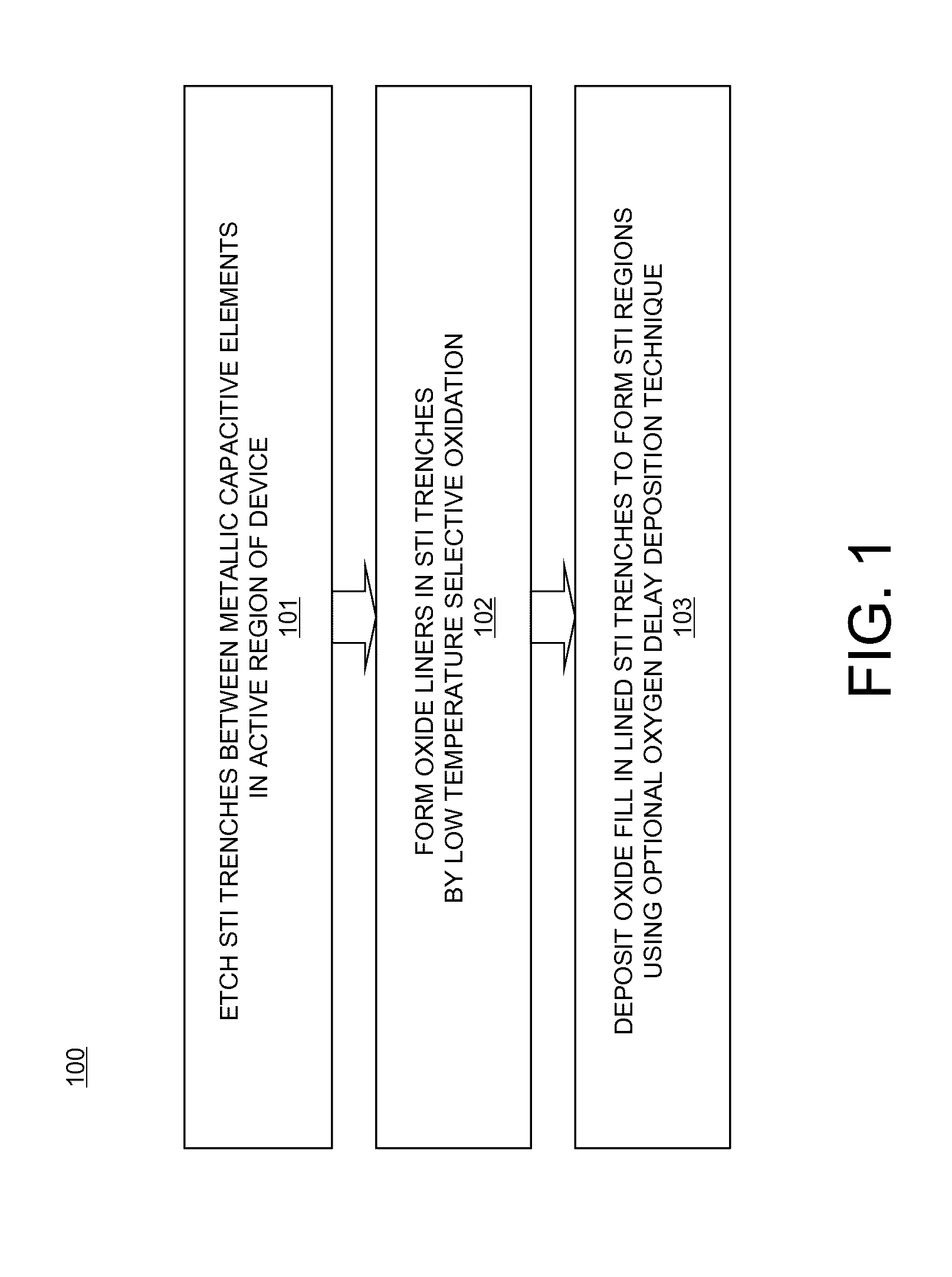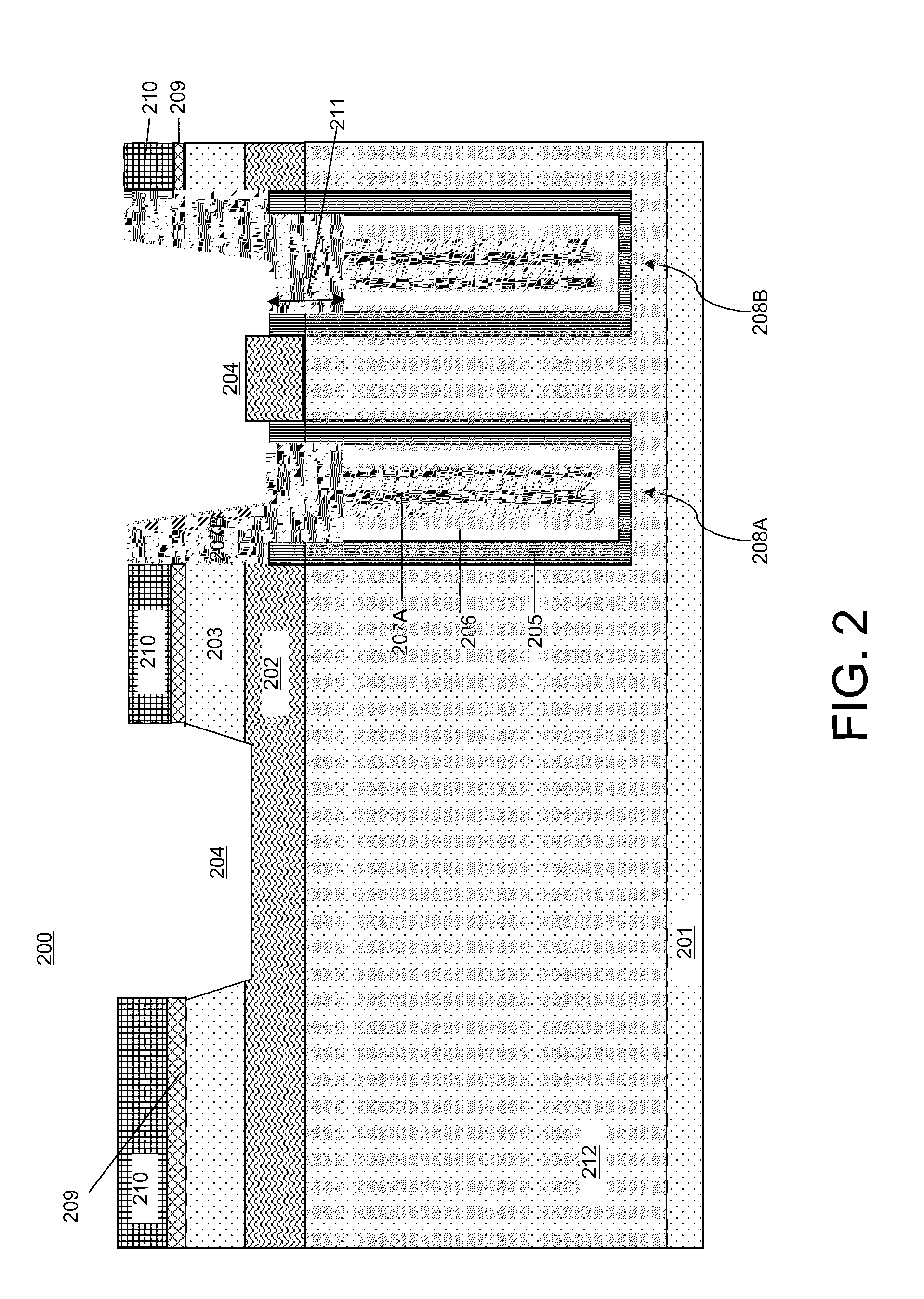Shallow trench isolation for device including deep trench capacitors
a capacitor and deep trench technology, applied in the field of shallow trench isolation (sti) regions, can solve the problems of power consumption of the dram, drop in performance, capacitance and amount of stored charge,
- Summary
- Abstract
- Description
- Claims
- Application Information
AI Technical Summary
Benefits of technology
Problems solved by technology
Method used
Image
Examples
Embodiment Construction
[0018]Embodiments of STI regions for a device including deep trench capacitors, and methods of forming STI regions for a device including deep trench capacitors, are provided, with exemplary embodiments being discussed below in detail. To continue DRAM scaling (i.e., further reduce area per unit memory cell, increase speed of memory cell operation, and maintain the amount of stored charge), the deep trench storage capacitors may include high-k deep trench node dielectric material and metal plate(s) that act as one or both electrodes of the storage capacitor. In a DRAM device that includes such capacitive elements with metal plate, oxidation of the metal plate material during STI region formation may be reduced by forming the STI liner using selective oxidation at a relatively low temperature. Such STI region formation techniques may also be used in conjunction with devices including deep-trench decoupling capacitors.
[0019]Selective oxidation for STI liner formation may be performed ...
PUM
 Login to View More
Login to View More Abstract
Description
Claims
Application Information
 Login to View More
Login to View More - R&D
- Intellectual Property
- Life Sciences
- Materials
- Tech Scout
- Unparalleled Data Quality
- Higher Quality Content
- 60% Fewer Hallucinations
Browse by: Latest US Patents, China's latest patents, Technical Efficacy Thesaurus, Application Domain, Technology Topic, Popular Technical Reports.
© 2025 PatSnap. All rights reserved.Legal|Privacy policy|Modern Slavery Act Transparency Statement|Sitemap|About US| Contact US: help@patsnap.com



